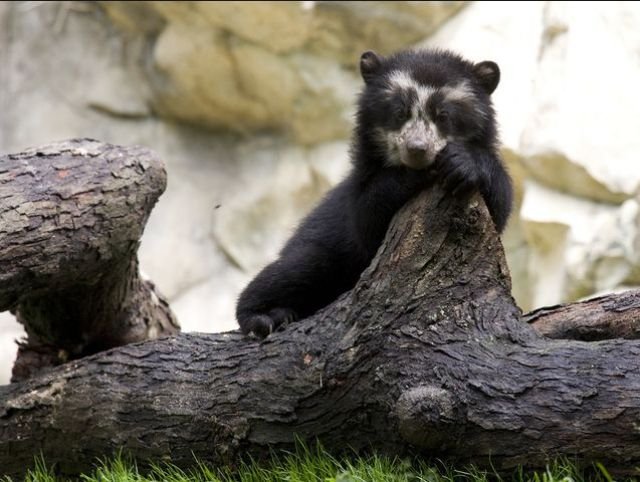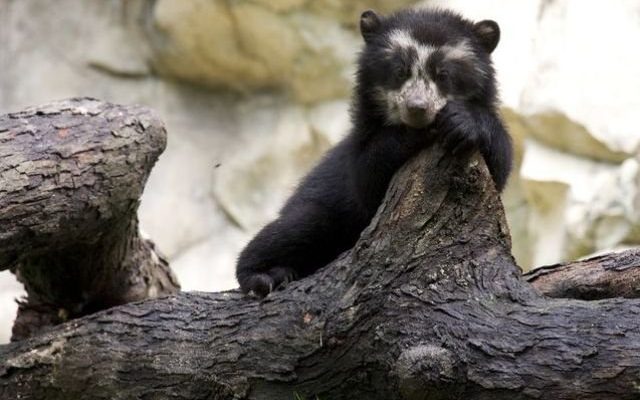
Imagine a bear, not towering and fierce, but rather one with a gentle and caring demeanor. Spectacled bears are unique not just for their striking facial markings but also for their nurturing ways. They play a crucial role in their ecosystem, and their approach to raising cubs is a mix of instinct, survival skills, and a touch of bear love. Let’s dive into the world of these fascinating creatures and explore how they care for their little ones in the wild.
Understanding Spectacled Bears and Their Habitat
Spectacled bears are the only bear species native to South America, and they primarily inhabit the mountainous regions from Venezuela to northern Argentina. They prefer dense forests and cloud forests, a bit like finding a cozy cafe in the middle of a big city. These remote areas are perfect for their lifestyle, providing ample food sources like fruits, honey, and even small animals. Their spotted faces give them their name, but it’s their ability to adapt to these habitats that makes them intriguing.
In these forests, the climate can vary quite a bit—from cool breezes to heavy rains. Spectacled bears are built to handle these fluctuations, sporting thick fur that keeps them warm. This adaptability not only helps them survive but also plays a crucial role in how they raise their young. A nurturing environment is essential, especially when it comes to cubs who are born blind and entirely dependent on their mothers.
Breeding and Gestation: The Starting Line
Breeding season for spectacled bears typically occurs between May and July. During this time, the males and females may come together, forming a temporary bond. After mating, the female goes through a fascinating process called delayed implantation. This means the fertilized egg doesn’t immediately implant in her uterus. Instead, it waits until environmental conditions are optimal, which can be a bit like holding off on a big trip until the weather is just right.
Once the egg implants, the gestation period lasts about 7 to 8 months. When cubs are born, usually between one to three at a time, they weigh about a pound each. It’s hard to imagine such tiny creatures turning into the awe-inspiring bears we’ll see later on. During this time, the mother bear focuses entirely on her cubs. She keeps them hidden in dens or secluded spots, ensuring their safety while bonding with them.
Nurturing Cubs: The First Steps in Life
After giving birth, mother spectacled bears are incredibly attentive. The cubs remain with their mother for about a year and a half, which is quite a commitment! This time is essential for their development. The mother bear nurses her cubs, teaching them how to forage for food and navigate their environment. You might say she’s giving them the “basic training” they need to survive.
Cubs learn by watching their mother. She demonstrates how to climb trees to find fruits or how to dig for roots. It’s a bit like showing a child how to ride a bike or cook. Each moment spent together is a lesson, from playing to exploring, helping them gain confidence before they venture out on their own.
The Importance of Play in Development
You’d be surprised to learn that playtime is a major part of a spectacled bear’s upbringing. When the cubs aren’t nursing or sleeping, they often engage in playful behavior. This playful interaction isn’t just for fun; it’s a crucial part of their learning process. As they tumble around with each other, they develop important social skills. It teaches them how to communicate, establish boundaries, and develop survival strategies.
Imagine a group of bear cubs play-fighting—they’re not just goofing off. These activities help strengthen their muscles and improve their coordination. It’s their way of preparing for the challenges they’ll face in the wild. So, while it looks like they’re just having a blast, they’re actually laying down the groundwork for their future lives.
Mother Bear’s Role in Teaching Survival Skills
As the cubs grow, their mother becomes less protective and starts encouraging them to venture out and explore their surroundings. Around 6 months old, they begin to eat solid food, gradually joining their mom on her foraging missions. This period is vital for their survival skills. She teaches them what to eat and what to avoid. It’s like giving them a map of the wilderness.
Interestingly, a mother spectacled bear will also show her cubs how to climb. This skill is crucial, as a lot of their food comes from trees. The ability to navigate their environment efficiently means they can access fruits and avoid predators. It’s a bit like giving them a set of keys to unlock the world around them.
Challenges in Raising Cubs
Raising cubs isn’t all sunshine and rainbows. Mother bears face several challenges, including predators and competition for food. In the wild, they must be vigilant to keep their young safe. This concern adds another layer to the nurturing process. A mother bear will often change locations if she feels her cubs are in danger, ensuring that they have a safe space to grow up.
The reality is that only a small percentage of cubs survive to adulthood. Factors like habitat loss and human encroachment also play a role in their survival rate. It’s a harsh world out there, and the mother’s instincts and teachings are crucial for the survival of her little ones. Each challenge she faces adds to her experience and, ultimately, her cubs’ future.
The Role of Fathers and Community
You might be wondering about the fathers in all this. Male spectacled bears typically don’t take on a role in raising the cubs. Once mating is done, they tend to go their separate ways. However, there is a benefit to living in a community of bears. While the mother is solely responsible for her cubs, other bears in the area indirectly contribute to their safety.
These bears share the territory and can help warn each other of dangers like predators. Though it’s not a communal parenting strategy, having other bears around does create a sense of security. It’s a little like living in a neighborhood—everyone looks out for one another.
Raising young spectacled bears is a remarkable journey filled with love, challenges, and lessons. From the nurturing instincts of the mother bear to the playful antics of the cubs, nature has crafted a unique approach to survival. These bears teach us that parenting is not just about protection but also about teaching independence.
In every scratchy tree branch and playful tumble, the future of spectacled bears hangs in the balance. As they navigate their way through life, they carry with them the lessons learned from their mother—the gentle, fierce protector of the wild. With an understanding of how these bears raise their young, we can appreciate the intricate dance of life in the heart of the Andes and the vital role these creatures play in their ecosystem.

